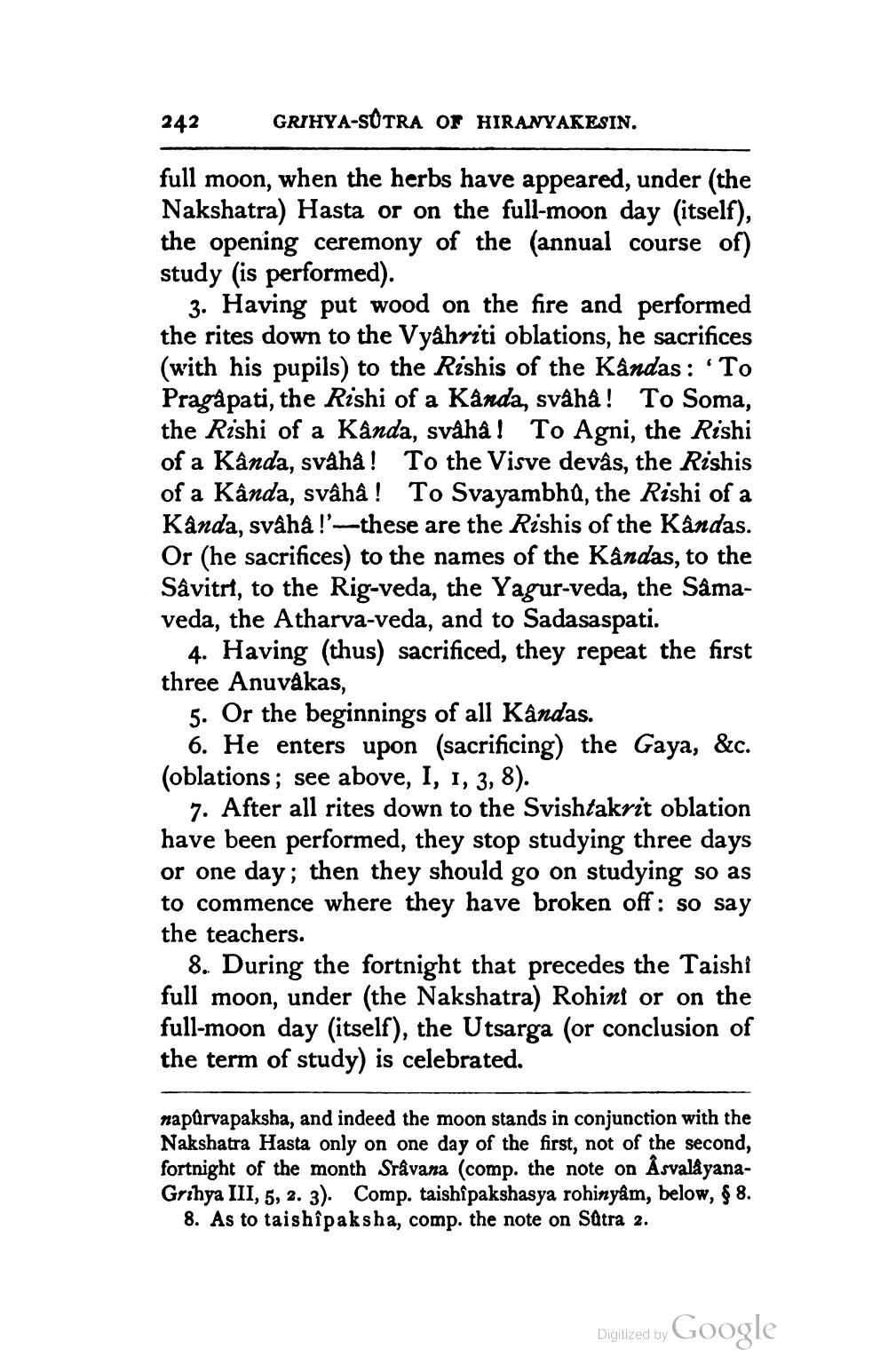________________
242
GRIHYA-SÓTRA OF HIRANYAKESIN.
full moon, when the herbs have appeared, under (the Nakshatra) Hasta or on the full-moon day (itself), the opening ceremony of the annual course of) study is performed).
3. Having put wood on the fire and performed the rites down to the Vyâhriti oblations, he sacrifices (with his pupils) to the Rishis of the Kandas: 'To Pragàpati, the Rishi of a Kanda, svåhå! To Soma, the Rishi of a Kanda, svåhå! To Agni, the Rishi of a Kanda, svåhå! To the Visve devâs, the Rishis of a Kânda, svâhâ ! To Svayambha, the Rishi of a Kânda, svâhà !'--these are the Rishis of the Kandas. Or (he sacrifices) to the names of the Kandas, to the Sâvitri, to the Rig-veda, the Yagur-veda, the Sâmaveda, the Atharva-veda, and to Sadasaspati.
4. Having (thus) sacrificed, they repeat the first three Anuvâkas,
5. Or the beginnings of all Kandas.
6. He enters upon (sacrificing) the Gaya, &c. (oblations; see above, I, 1, 3, 8).
7. After all rites down to the Svishtakrit oblation have been performed, they stop studying three days or one day; then they should go on studying so as to commence where they have broken off: so say the teachers.
8. During the fortnight that precedes the Taishi full moon, under (the Nakshatra) Rohini or on the full-moon day (itself), the Utsarga (or conclusion of the term of study) is celebrated.
napurvapaksha, and indeed the moon stands in conjunction with the Nakshatra Hasta only on one day of the first, not of the second, fortnight of the month Sravana (comp. the note on AsvalåyanaGrihya III, 5, 2. 3). Comp. taishîpakshasya rohinyâm, below, $ 8.
8. As to taishîpaksha, comp. the note on Sätra 2.
Digilized by Google




